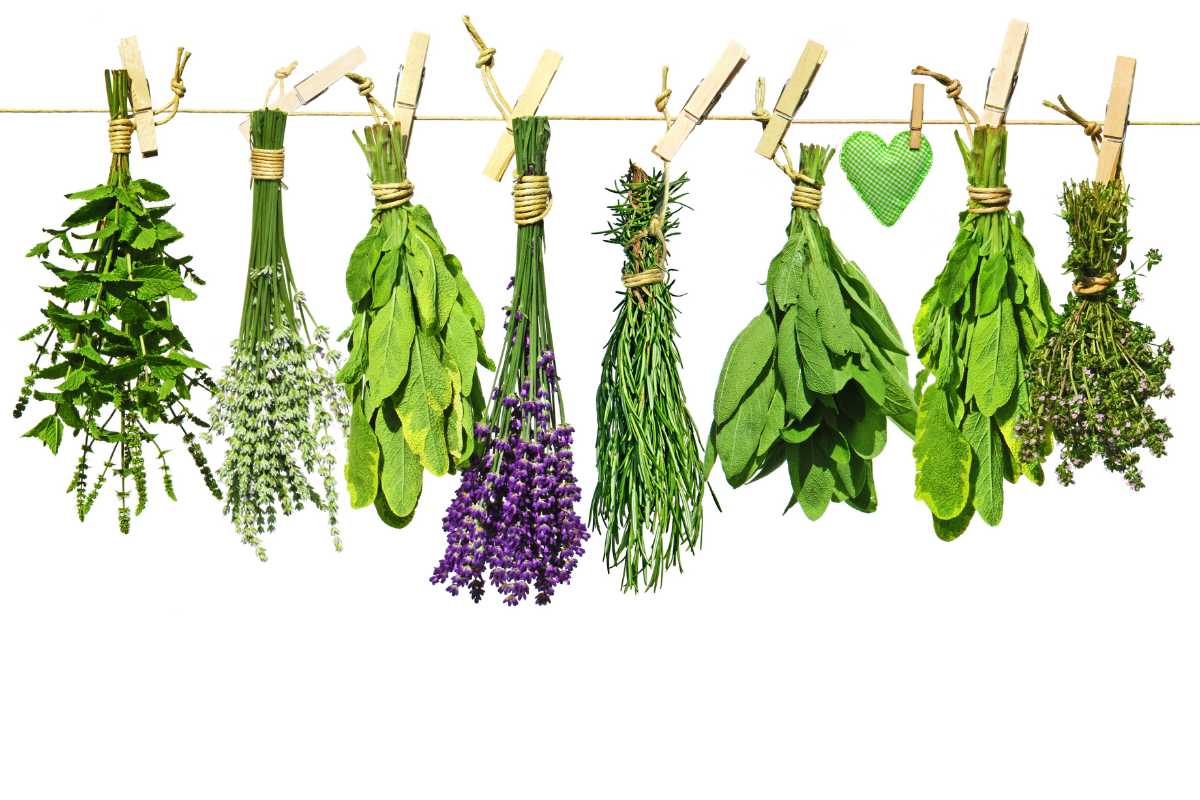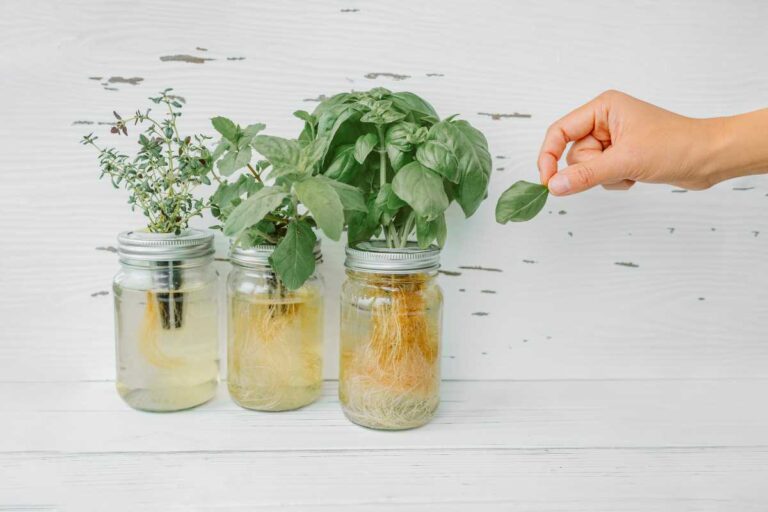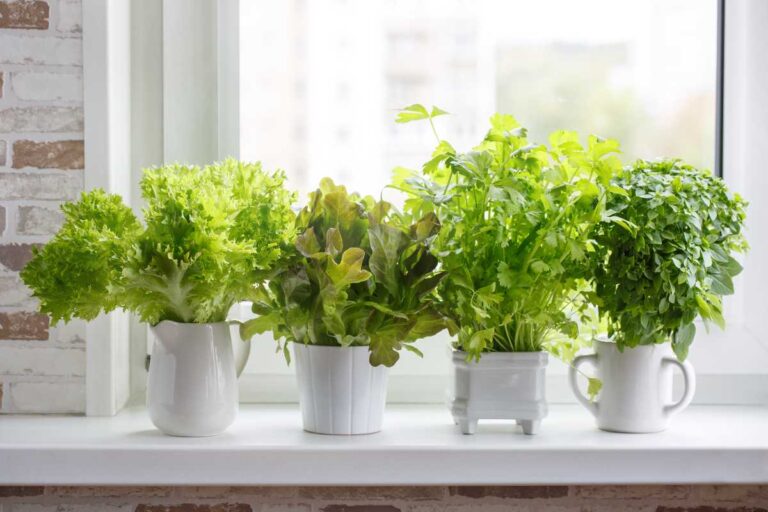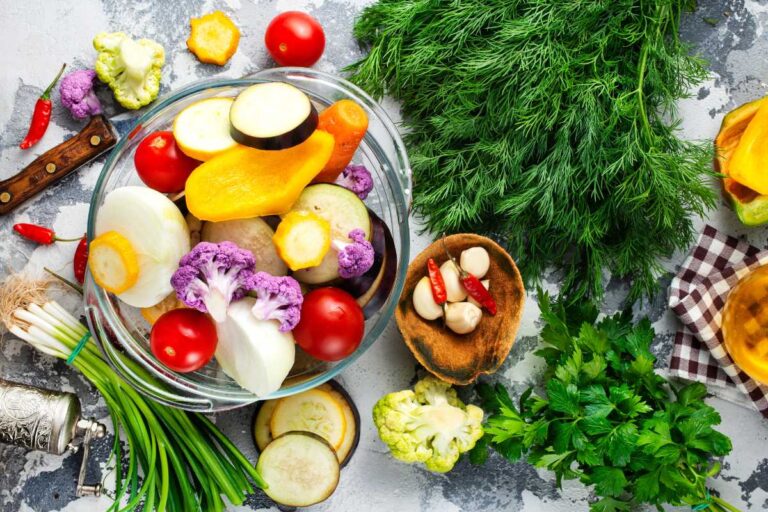What Are the 10 Most Used Herbs? Explore the Top 10 Kitchen Herbs for Culinary Delights
What Are the 10 Most Used Herbs? Explore the Top 10 Kitchen Herbs for Culinary Delights

Herbs play a significant role in the culinary world, not only for their ability to enhance the flavors of dishes but also for their numerous health benefits.
These versatile plants are used across various cuisines and have become staples in many recipes. From adding a burst of freshness to providing aromatic notes, herbs bring depth and complexity to meals.
By understanding these popular herbs, readers can expand their culinary repertoire and discover new ways to incorporate them into their cooking.
Beyond their culinary uses, these herbs offer an array of health benefits. Packed with vitamins, minerals, and antioxidants, they can support digestion, boost immunity, and even alleviate certain ailments.
Exploring the world of herbs opens up a realm of possibilities for both flavor enhancement and wellness promotion.
Join us as we delve into the fascinating realm of these ten widely utilized herbs and uncover the secrets behind their popularity!
| Herb | Reason |
|---|---|
| Basil | Adds a fresh and vibrant flavor to dishes |
| Rosemary | Enhances the taste of roasted meats and vegetables |
| Thyme | Adds a savory and earthy flavor to soups and stews |
| Parsley | Provides a bright and refreshing taste to dishes |
| Mint | Adds a cool and refreshing flavor to desserts and beverages |
| Cilantro | Adds a unique and zesty flavor to Mexican and Asian cuisines |
| Dill | Enhances the flavor of pickles, seafood, and salads |
| Sage | Adds a warm and earthy flavor to stuffing and roasted meats |
| Oregano | Enhances the taste of Italian and Mediterranean dishes |
| Chives | Provides a mild and onion-like flavor to various dishes |
Tired of struggling with outdoor herb gardens in unpredictable weather? Discover the secret to successful herbal gardening indoors and enjoy fresh herbs year-round. Check out our article now!
Parsley Varieties: Curly, Italian, and Petroselinum Crispum
Curly parsley, Italian parsley, and Petroselinum crispum are three popular varieties of parsley that are widely used in cooking. Each variety has its own distinct characteristics and flavors, making them suitable for different culinary applications.
Curly parsley: A Vibrant Garnish
Curly parsley is perhaps the most recognizable variety with its tightly curled leaves and vibrant green color. It is commonly used as a garnish due to its appealing appearance.
Whether sprinkled over a plate of food or used to decorate a dish, curly parsley adds a touch of freshness and visual appeal.
Beyond its decorative purposes, curly parsley also offers a mild flavor that complements various dishes. Its subtle taste makes it versatile enough to be added to soups, stews, salads, or even as an ingredient in marinades.
In addition to enhancing the overall presentation of a meal, curly parsley adds a hint of freshness without overpowering other flavors.
Italian parsley: A Flavorful Herb
Italian parsley is another popular variety known for its robust flavor profile. With flat leaves and a more intense taste compared to curly parsley, it is favored by many chefs in Mediterranean cuisine.
The slightly peppery and tangy notes of Italian parsley can elevate the flavors of pasta dishes, seafood recipes, sauces, and dressings.
Due to its stronger taste, Italian parsley is often used as an essential ingredient rather than just a garnish. Its versatility allows it to be incorporated into both cooked and raw preparations.
From adding depth to homemade pesto or chimichurri sauce to providing a fresh burst when sprinkled over grilled vegetables or roasted meats – Italian parsley brings an unmistakable flavor dimension.
Petroselinum Crispum: The Scientific Name
Interestingly enough, both curly and Italian parsley belong to the same botanical species – Petroselinum crispum.
This scientific name encompasses both varieties, highlighting their close relationship and similar characteristics. While they may differ in appearance and taste, they share a common botanical classification.
The distinction between curly and Italian parsley lies primarily in their leaf structure and flavor profiles.
Curly parsley is known for its tightly curled leaves, while Italian parsley has flat leaves that resemble cilantro. Despite these differences, both varieties offer the same health benefits associated with parsley, such as being a rich source of vitamins A, C, and K.
Dill: Multiple Uses and Benefits
Dill, a versatile herb with a distinct taste, has found its way into numerous culinary creations. Whether you’re preparing a delightful fish dish, adding flair to pickles, or enhancing the flavors of your salads, dill is an essential ingredient that brings both fun and flavor to your meals.
One of the reasons why dill is widely used in cooking is its unique taste. Its fresh and tangy flavor profile adds a refreshing twist to any dish it accompanies.
The herb’s vibrant green leaves provide a burst of freshness that complements various ingredients perfectly. From creamy salad dressings to savory marinades, dill never fails to elevate the overall taste experience.
Beyond its culinary applications, dill also boasts several medicinal properties that make it more than just a flavorful herb.
Traditionally recognized for aiding digestion, dill has been used for centuries as a natural remedy for stomach ailments. Its soothing effects can help alleviate indigestion and bloating, providing relief when you need it most.
Furthermore, dill possesses anti-inflammatory properties that can contribute to your overall well-being. It contains compounds known as flavonoids that have been shown to reduce inflammation in the body.
By incorporating dill into your diet regularly, you may experience reduced inflammation and potential health benefits associated with this property.
When using dill in your recipes, it’s worth noting that fresh leaves are preferred over dried ones due to their stronger flavor.
While both forms can be used interchangeably depending on availability and personal preference, fresh dill leaves offer a more potent taste profile that enhances the overall enjoyment of your dishes.
Fun fact: Did you know that aside from being an excellent addition to your meals, dill also makes for an attractive garnish? Its delicate feathery fronds add visual appeal and a touch of elegance to any plate presentation.
So not only does it enhance the flavors of your food but also adds a pleasing aesthetic element to your culinary creations.
Oregano: Italian and Greek Varieties
Italian oregano and Greek oregano are two popular varieties of this aromatic herb. While they share similarities, such as their common use in pizza, pasta sauces, and marinades, there are distinct differences between the two.
Italian oregano is known for its milder taste compared to the more robust Greek variety. Its delicate flavor adds a subtle hint to dishes without overpowering other ingredients. This makes it a preferred choice in recipes where a lighter touch of oregano is desired.
On the other hand, Greek oregano packs a punch with its stronger flavor. Its bold and peppery taste can elevate the overall profile of a dish. It pairs exceptionally well with rich flavors like garlic and is often used in Mediterranean cuisines to add depth to various dishes.
Both types of oregano offer not only flavor but also potential health benefits. Oregano contains antioxidants that may help fight bacterial infections.
These antioxidants have been found to possess antimicrobial properties, making oregano an excellent addition to your culinary creations while potentially boosting your immune system.
In addition to its traditional uses in Italian and Greek cuisines, oregano can be versatile in various dishes from around the world. Consider incorporating this herb into your cooking repertoire beyond just pizza or pasta sauces:
- Sprinkle some Italian or Greek oregano over salads for an extra burst of flavor.
- Infuse olive oil with oregano for a fragrant dipping sauce or drizzle it over roasted vegetables.
- Use it as a seasoning for roasted chicken or fish for an aromatic twist.
- Add it to scrambled eggs or frittatas to enhance breakfast dishes with a Mediterranean flair.
- Incorporate oregano into stuffing recipes during holiday seasons like Christmas for an extra layer of warmth and taste.
While both Italian and Greek varieties are widely available, certain areas are renowned for their exceptional quality.
For instance, the Provence region in France is famous for its high-quality herbs, including oregano. Similarly, the Royal Oak area in Michigan is known for its local farms that produce top-notch oregano.
Thyme: Exploring the Thymus Herb
Thyme, a versatile herb, is renowned for its ability to add a subtle earthy flavor to various dishes. Whether you’re preparing soups, stews, roasted meats, or vegetables, thyme can enhance the taste profile of your culinary creations.
But thyme isn’t just about flavor; it also packs a nutritional punch. With high levels of vitamins C and A, as well as minerals like iron and manganese, this herb offers both taste and health benefits.
Thyme leaves can be used in two forms – fresh or dried – depending on the recipe at hand. Fresh thyme leaves are plucked from the stems and added directly to dishes during cooking.
The vibrant green leaves release their aromatic oils when heated, infusing your food with a delightful fragrance. On the other hand, dried thyme is perfect for longer cooking times or when you want a more intense flavor profile.
When harvesting thyme from your garden or purchasing it from a store, it’s important to know how to properly handle this herb.
Gently pinch the stem near the base and slide your fingers along it in an upward motion to remove the leaves easily. Avoid using excessive force that could damage the plant or result in unnecessary wastage.
Apart from its culinary uses, thyme is also popularly enjoyed as a herbal tea. Steeping fresh or dried thyme leaves in hot water creates an aromatic infusion that is believed to have several health benefits.
Thyme tea is often consumed during cold and flu season due to its potential immune-boosting properties.
For those who love experimenting with flavors in their recipes, combining thyme with other herbs can create exciting combinations.
One such pairing involves blending thyme with chives for a unique twist of flavors. Chives bring their mild onion-like taste while complementing the earthiness of thyme perfectly.
In addition to its culinary applications, thyme has also found its way into the realm of natural remedies.
Its essential oil is used in aromatherapy to promote relaxation and relieve stress. The scent of thyme has been associated with feelings of calmness, making it an ideal choice for those seeking a moment of tranquility.
Thyme’s versatility extends beyond the kitchen and spa; it can also be used as a decorative element during the holiday season.
Adorning your home with thyme wreaths or incorporating sprigs of thyme into floral arrangements adds a festive touch while infusing the air with its delightful fragrance.
To summarize, thyme is an herb that offers much more than just flavor. With its rich nutritional profile, versatility in culinary applications, and potential health benefits, it’s no wonder that thyme is one of the most widely used herbs today.
So whether you’re adding it to your favorite holiday recipes or simply enjoying a cup of thyme tea, this herb brings both taste and wellness to the table.
Sage and Rosemary: Aromatic and Versatile Herbs
Sage and rosemary are two incredibly aromatic and versatile herbs that have been widely used in culinary traditions around the world. Each herb brings its own unique flavor profile to dishes, making them indispensable in the kitchen. Let’s explore these herbs and their various uses.
Sage Imparts Savory Flavor
Sage, with its distinct earthy aroma, is known for imparting a savory flavor to a variety of dishes. It pairs exceptionally well with poultry, adding depth and richness to roasted chicken or Thanksgiving turkey.
The herb’s slightly peppery taste enhances stuffing, giving it a delightful kick. In addition to its culinary uses, sage has also been traditionally valued for its medicinal properties.
Medicinal Properties of Sage
For centuries, sage has been treasured for its potential health benefits. One of the most well-known uses of sage is in soothing sore throats. Its natural antibacterial properties help alleviate discomfort and reduce inflammation when brewed into a tea or used as a gargle. Moreover, sage has been used as an herbal remedy for digestive issues such as bloating and indigestion.
Rosemary Enhances Lamb Recipes
Rosemary boasts an invigorating aroma that complements various meat dishes splendidly. This herb works wonders with lamb recipes, infusing them with a robust flavor that tantalizes the taste buds. Whether you’re grilling lamb chops or slow-roasting leg of lamb, rosemary adds an irresistible fragrance that elevates the dish to new heights.
Memory-Boosting Potential of Rosemary
Beyond its culinary applications, rosemary holds potential cognitive benefits as well. Research suggests that certain compounds found in rosemary may enhance memory function and improve concentration levels.
The scent of rosemary has even been linked to increased alertness, making it an excellent choice for studying or working on mentally demanding tasks.
Incorporating these herbs into your cooking repertoire can be a simple and enjoyable way to elevate your dishes. Here are some ideas for using sage and rosemary:
- Add fresh sage leaves to soups, stews, or sauces for an aromatic twist.
- Infuse olive oil with rosemary to drizzle over roasted vegetables or grilled meats.
- Use dried sage and rosemary in spice blends for marinades or rubs.
- Garnish salads with finely chopped fresh sage leaves or sprinkle rosemary leaves over roasted potatoes.
Whether you’re preparing a hearty winter soup, marinating meat for the grill, or simply looking to add a burst of flavor to your favorite recipes, sage and rosemary are fantastic choices. Their versatility and enticing aromas make them indispensable additions to any kitchen.
Cilantro/Coriander: Two Names for One Herb (Coriandrum Sativum)
Cilantro and coriander are two names that refer to different parts of the same herb, Coriandrum sativum. While cilantro refers to the fresh leaves of the plant, coriander specifically denotes the seeds. Both cilantro and coriander have distinct flavors and are widely used in various cuisines around the world.
Cilantro is known for its bright and vibrant flavor, which adds a refreshing touch to many dishes. It is particularly popular in Mexican, Indian, and Asian cuisines.
The leaves are often used as a garnish or added towards the end of cooking to preserve their fresh taste. Cilantro’s unique flavor profile combines hints of citrus, parsley, and mint, making it an essential ingredient in dishes like salsa, guacamole, curries, and stir-fries.
Apart from its culinary uses, cilantro also offers several health benefits. It is packed with antioxidants and vitamins A, C, and K. Cilantro contains compounds that may help reduce inflammation and support digestion. Its distinct aroma can even stimulate appetite.
On the other hand, coriander seeds have a warm and slightly citrusy flavor that differs from cilantro’s leafy freshness. These seeds are commonly ground into a powder or used whole as a spice in various dishes worldwide. In Indian cuisine alone, coriander seeds find extensive use in curries, chutneys, pickles, and masalas.
The versatility of coriander seeds extends beyond just enhancing flavors; they also offer potential health benefits. They contain essential oils that possess antimicrobial properties and may aid digestion by reducing bloating or discomfort caused by indigestion.
In addition to their distinctive tastes and health benefits, both cilantro leaves and coriander seeds play crucial roles in traditional medicine practices. They have been used for centuries to treat digestive issues, inflammation, and even as natural remedies for anxiety and insomnia.
To make the most of cilantro and coriander in your cooking, consider these creative uses:
- Cilantro:
- Blend it into a vibrant green sauce or pesto.
- Use it as a topping for tacos, soups, or grilled meats.
- Incorporate it into fresh salads or coleslaw for an added burst of flavor.
- Coriander seeds:
- Toast them lightly before grinding to enhance their aroma.
- Add them to marinades for meat or poultry.
- Sprinkle them over roasted vegetables for a unique twist.
Growing and Maintaining Kitchen Herbs
Herbs are a wonderful addition to any culinary enthusiast’s kitchen. Not only do they add flavor and aroma to dishes, but they also offer numerous health benefits.
Growing your own herbs is not only cost-effective but also allows you to have a fresh supply of these fragrant plants right at your fingertips. Whether you have a spacious garden or limited space indoors, creating a culinary herb garden is easier than you might think.
Easy Indoor and Outdoor Cultivation
One of the great things about growing kitchen herbs is that they can be cultivated both indoors and outdoors. With proper sunlight and watering, you can enjoy an abundant supply of herbs throughout the year.
For indoor cultivation, find a sunny spot near a window where your herb plants can receive at least 6-8 hours of sunlight daily. If outdoor gardening is more your style, choose a location in your garden that gets ample sunlight.
Pruning for Bushier Growth
Regular pruning plays a vital role in maintaining healthy herb plants. By trimming back the leaves regularly, you encourage bushier growth and ensure continuous production of flavorful leaves. When pruning, make sure to remove any dead or yellowing leaves as well as any flowers that may appear on certain herbs like basil, as this helps redirect energy towards leaf production.
Temperature Preferences
Different kitchen herbs have varying temperature preferences. Some herbs, such as basil, prefer warmer temperatures ranging from 70°F to 90°F (21°C to 32°C). On the other hand, mint thrives in cooler conditions with temperatures around 60°F to 70°F (15°C to 21°C). Understanding these temperature requirements will help you create an ideal environment for each herb in your garden.
To summarize:
- Herbs can be easily grown indoors or outdoors with proper sunlight and watering.
- Regular pruning helps herbs grow bushier and produce more flavorful leaves.
- Some kitchen herbs like basil prefer warmer temperatures, while others like mint thrive in cooler conditions.
By following these simple guidelines, you can successfully grow and maintain a thriving culinary herb garden. Whether you choose to plant them in pots on your kitchen windowsill or create a dedicated herb garden in your backyard, the rewards of having fresh herbs at your disposal for cooking are truly worth the effort.
So head to your local garden centers or stores like Watters Garden Center and start gathering the necessary supplies to embark on this delightful journey of growing your own kitchen herbs.
Discovering the Top 10 Most Used Herbs
We started by discussing different varieties of parsley, including curly, Italian, and Petroselinum Crispum. Then we delved into the versatile herb dill and its multiple uses and benefits. Oregano, with its Italian and Greek varieties, was also highlighted for its distinct flavor profiles.
Thyme, sage, rosemary, cilantro/coriander were all examined for their aromatic qualities and culinary applications. Lastly, we provided insights on growing and maintaining kitchen herbs.
Now armed with knowledge about these essential herbs, you can elevate your cooking skills to new heights. Incorporating these flavorful ingredients into your dishes will not only enhance taste but also add depth to your culinary creations.
So why not experiment with these herbs in your next meal? Whether you’re a seasoned chef or an aspiring home cook, exploring the world of herbs is sure to bring a delightful twist to your recipes.
FAQs
What are some other commonly used herbs?
Some other commonly used herbs include basil, mint, chives, cilantro/coriander (mentioned earlier), parsley (also discussed), and bay leaves. Each of these herbs has unique flavors and can be used in various cuisines around the globe.
Can I grow these herbs at home?
Absolutely! Growing your own kitchen herbs is a rewarding experience that allows you to have fresh ingredients readily available whenever you need them. Most of the mentioned herbs can be easily grown in pots or small gardens as long as they receive adequate sunlight and water.
How should I store fresh herbs?
To keep fresh herbs at their best for longer periods, it’s recommended to store them properly. One method is to place them in a glass jar filled with water (similar to flowers) and cover loosely with a plastic bag before refrigerating. Another option is to wrap the herbs in a damp paper towel and store them in a sealed plastic bag in the refrigerator.
Can I use dried herbs instead of fresh ones?
Yes, you can substitute dried herbs for fresh ones, but it’s important to note that the flavors may vary. Dried herbs are more concentrated, so you’ll need less quantity compared to fresh herbs. As a general rule, use one-third of the amount of dried herbs if replacing with fresh ones in a recipe.
Where can I buy these herbs?
You can find these commonly used herbs at your local grocery stores or farmers’ markets. Many online retailers offer a wide variety of culinary herbs for purchase, making it convenient to explore different options from the comfort of your home.







